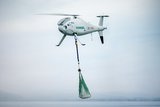US Army outlines robotic combat vehicle test plans
The US Army is set to carry out operational testing of robotic combat vehicles (RCVs) controlled from the back of modified Bradley Fighting Vehicles as part of work to inform where to go next with autonomous vehicles.
The testing, which will be conducted at Fort Carson, Colorado in March 2020, will provide input to Army Futures Command’s Combat Capabilities Development Command's Ground Vehicle Systems Center and Next-Generation Combat Vehicle Cross-Functional Team.
Upgraded Bradleys, called Mission Enabler Technologies-Demonstrators (MET-Ds) have been equipped with a remote turret for the 25mm main gun, 360-degree situational awareness cameras and enhanced crew stations with touchscreens. Initial testing will include two MET-Ds and four RCVs on M113 surrogate platforms. Each MET-D will have a driver and gunner as well as four soldiers in its rear, who will conduct platoon-level manoeuvres with two surrogate vehicles that fire 7.62mm machine guns.
A light infantry unit plans to experiment with the RCV light surrogate vehicles in Eastern Europe next May, then work will continue in 2021 with company-level manoeuvres. Experiments are slated to incorporate six MET-Ds and the same four M113 surrogates, in addition to four light and four medium surrogate RCVs to be supplied by industry.
The third phase of testing will take place in 2023, with the same number of MET-Ds and M113 surrogate vehicles, but with four medium and four heavy purpose-built RCVs.
According to the army, the family of RCVs will include three variants. The light version will be transportable by rotary wing, the medium variant would be able to fit onto a C-130 aircraft, and the heavy variant would fit onto a C-17 aircraft.
Both future and legacy armoured platforms, such as the forthcoming Mobile Protected Firepower ‘light tank,’ could influence the development of the RCV heavy. With no human operators inside it, the heavy RCV will be designed to provide the lethality associated with armoured combat vehicles in a much smaller form.
Related Equipment in Defence Insight
More from Uncrewed Vehicles
-
Jammer resistant drone designs spark search for countermeasures
The Russia-Ukraine conflict has driven another stage of evolution for drones and the counter measures to defend against them.
-
![L3Harris launches Amorphous software for control of uncrewed platforms]()
L3Harris launches Amorphous software for control of uncrewed platforms
The new Amorphous software is a universal controller that would allow a single operator to control a swarm of “thousands” of uncrewed systems, from drones to underwater platforms.
-
ideaForge unveils new UAVs at Aero India 2025
India UAV supplier ideaForge has launched the Netra 5 and Switch V2 drones at Aero India 2025, boasting of enhanced endurance, AI-driven autonomy and improved operational capabilities.
-
![Shaping the future of defence: What 2025 holds for the global drone market]()
Shaping the future of defence: What 2025 holds for the global drone market
The UAV market is experiencing unprecedented growth, with innovations in technology and battlefield applications driving demand across military sectors. From the battlefields of Ukraine to NATO exercises and beyond, drones are transforming how wars are fought and supported.
-
![Maris-Tech confirms customers signing up for Jupiter Drones codec and AI-powered system]()
Maris-Tech confirms customers signing up for Jupiter Drones codec and AI-powered system
Launched at AUSA in October, the company’s multi-stream video codec is attempting to bring a new lease of life to drone technology through its AI accelerator.
-
![AUSA 2024: Quantum-Systems targets big 2025 with UAS developments]()
AUSA 2024: Quantum-Systems targets big 2025 with UAS developments
Quantum-Systems has been upgrading its UAS family, with new versions of the Vector, Reliant and Twister drones set for release throughout 2025.
























